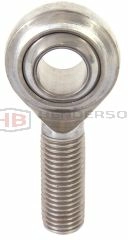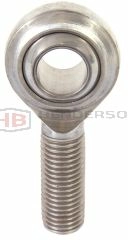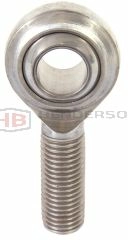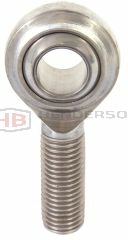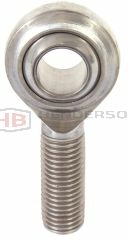Male Stainless Steel Rod End - Maintenance Free
Male Stainless Steel Rod Ends (Maintenance Free)
The Male Stainless Steel Rod End is designed ot offer a durable solution in articulating joint technology. These male rod ends are Maintenance free and constructed from high-grade stainless steel, providing exceptional strength and resistance to corrosion, making it suitable for demanding environments. Featuring a male threaded shaft, it facilitates easy integration with various mechanical systems. Its maintenance-free characteristic is attributed to self-lubricating materials, which eliminate the need for routine maintenance. Ideal for use in challenging conditions. Our collection of rod ends including these stainless steel rod ends, delivers reliable performance and longevity, making them invaluable in automotive, marine, and industrial applications.
What are maintenance-free male stainless steel rod ends?
Maintenance-free male stainless steel rod ends are joint bearings that don't require additional lubrication. They are constructed from stainless steel, suitable for applications where corrosion resistance and longevity are vital, such as in outdoor or harsh environments.
How long can I expect maintenance-free rod ends to last?
The lifespan of maintenance-free rod ends can vary based on usage intensity and environmental factors. However, their self-lubricating design and robust construction generally ensure an extended service life compared to regular rod ends that require periodic maintenance.
Can I use these rod ends in food processing or medical applications?
Yes, male stainless steel rod ends that are maintenance-free are often suitable for use in food processing or medical applications since they resist corrosion, can be cleaned easily, and do not contaminate the environment with lubricants.
Are there different types of stainless steel rod ends for varying load capacities?
Indeed, there are different types of stainless steel rod ends designed to accommodate varying load capacities and application requirements. It's important to select the appropriate type based on the specific load and performance needs of your machinery or assembly.

